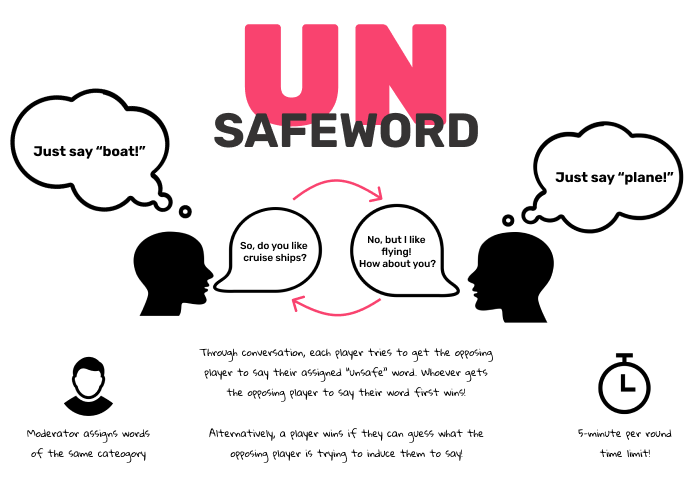
After completing CS 247B: Design for Behavioral Change last quarter, I just knew I had to continue taking more design studio classes. Taking CS 247B with Christina was one of the most enjoyable course experiences I’ve ever had as a college student (you can read my full reflection for CS 247B from last quarter here). When I saw that CS 247G: Introduction to Game Design was being offered by Christina the very next quarter, you can bet that I raced to sign up as soon as course enrollment opened at midnight.
All in all, I had as positive an experience in this design studio as I did in the last one. Having completed both CS 147 and CS 247B last quarter (my first design courses at Stanford ever) also helped mitigate some of the imposter syndrome I had felt previously. Even so, this course opened up a whole new region of the world of design to me that reminded me just how much I had yet to explore.
Before this class
For some reason, every time I heard the term “game design,” my mind would automatically revert to daydreaming about The Legend of Zelda series – a series of video games that I’ve dedicated years of my life to playing. In a Computer Science/Symbolic Systems setting, I always assumed that games referred to video games. And whenever I thought about game design, I would simply think about graphic design or any other aspects of the game that were completely user-facing, such as what the characters and environment looked like or what music played in the background.

Given that I assumed game = video game, whenever I thought about play, I would simply think of the game’s narrative. In addition to The Legend of Zelda, I’m a huge fan of other adventure games with plots that often carry over multiple games (the Final Fantasy series, the Silent Hill series, the Resident Evil series, etc.). As a result, in addition to graphics, the only other thing that really crossed my mind when I thought about game evaluation was whether it had a good storyline or not.
What I did and experienced
The first half of this quarter, including Project 1, immediately shattered the representative heuristic I once held towards what games even were. For the first several weeks, I worked with three wonderful classmates (Pablo, Saljuk, and Andrea) to create our word-guessing social mediation game (Un)Safeword, which you can read about here! What was special about this game was the fact that it could be played not only over a video conferencing platform, but also in real life, face-to-face.

During the second half of the quarter, I worked with four amazing classmates (Olivia, Julia, Claus, and Andrea again) to create our virtual escape room, No Trace, which you can read about here! Hosted on Discord and involving a variety of real-world digital artifacts, we had a lot of fun designing a narrative-based missing-person mystery game.

Some of the most significant takeaways I had from developing these two projects were buttressed by the readings we were given for our Sketchnotes and applied to our Critical Plays, particularly Fullterton’s chapter on Working with Formal Elements and Hunicke, LeBlanc, and Zubek’s MDA: A Formal Approach to Game Design and Game Research. Never before had I analyzed any sort of game as a breakdown of a set of standard elements. Similarly, I had never categorized types of fun and viewed them as aesthetics before (to me, I had always thought of an aesthetic as a purely visual quality). Having completed 8 Sketchnotes and 9 Critical Plays, and having applied the core concepts described in the aforementioned papers to a variety of contexts and games over the past 10 weeks, these frameworks for analysis have been drilled into my head.
Additionally, I had never realized just how significant playtesting was in the game design process. It was shocking to me to see how many pivots our games took based just on the feedback and observations we garnered from playtesting sessions. Things that made perfect sense to members of my teams in both projects sometimes were extremely unintuitive to outsiders. The significance of these sessions were incredibly eye-opening, and emphasized just how important it is for designers of all types to remember to empathize with their users.
For next time
Armed with a base of foundational knowledge about game design that simply did not exist 10 weeks ago, I will never quite look at games or game design the same way again. Although my teammates and I have not made concrete plans to continue developing our projects, one thing I would do differently if ever working on designing games in the future is to playtest more early and often. For Project Two, my team and I felt like we were on a time crunch near the last 2-3 weeks when we noticed that some of our latest playtesters were struggling with our game’s more challenging puzzles. Although we were able to mitigate most of their concerns by conducting several external playtests and adding dynamic hints, we all have now emerged with these experienced learnings.
I’m excited to continue my design journey and to learn more about empathizing with users as a student of Christina’s for the third quarter in a row in her Fall 21-22 design studio CS 247I: Design for Understanding. : ) Until then!


